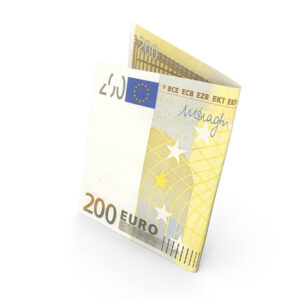The United States has been issuing paper currency since the Continental Congress authorized the printing of bills of credit in 1775. Over the years, the design of U.S. currency has changed several times, but the basic principles have remained the same. One of the most important principles is that all U.S. currency is legal tender, which means that it must be accepted for payment of debts. Are older $100 bills still valid?
What is Legal Tender?
Legal tender is any type of money that is recognized by the government as a valid form of payment. In the United States, legal tender is defined as coins and currency issued by the U.S. Treasury. This includes bills, coins, and other forms of currency that are currently in circulation.
Are Older $100 Bills Still Legal Tender?
Yes, older $100 bills are still legal tender. This means that they can still be used to pay for goods and services. However, it is important to note that older bills may not be as easy to use as newer bills. This is because older bills may not have the same security features as newer bills. As a result, some businesses may be reluctant to accept older bills.
What are the Security Features of U.S. Currency?
U.S. currency has a number of security features that make it difficult to counterfeit. These features include:
Watermarks: Watermarks are faint images that can be seen when you hold a bill up to a light.
Security threads: Security threads are thin, plastic strips that are embedded in the paper of a bill.
Color-shifting ink: Some of the ink on U.S. currency changes color when you tilt the bill.
Microprinting: Tiny text that can only be seen with a magnifying glass.
Latent images: Images that appear when you hold a bill at a certain angle.
3-D security ribbon: A ribbon that appears to move when you tilt a bill.
How Can You Tell if a $100 Bill is Counterfeit?
If you are unsure if a $100 bill is real or fake, there are a few things that you can look for. These include:
The watermark: The watermark should be located to the right of the portrait.
The security thread: The security thread should run vertically from the top to the bottom of the bill.
The color-shifting ink: The number 100 on the front of the bill should change color when you tilt the bill.
The paper quality: Genuine U.S. currency is made from a special type of paper that is difficult to counterfeit. The paper should feel crisp and thick.
The printing: The printing on genuine U.S. currency is very high quality. The lines should be sharp and clear, and there should be no blurry or uneven areas.
The microprinting: There is small, detailed printing on the front and back of the bill. This printing is very difficult to counterfeit.
The serial numbers: The serial numbers on genuine U.S. currency are unique and printed in a specific way. The numbers should be evenly spaced and the font should be consistent.
What Should You Do If You Receive a Counterfeit Bill?
If you receive a counterfeit bill, you should do the following:
Do not spend the bill.
Contact your local police department.
Contact the U.S. Secret Service.
The U.S. Secret Service is the federal agency responsible for investigating counterfeiting. If you contact the Secret Service, they will be able to provide you with more information about counterfeiting and how to report it.
Conclusion
In conclusion, older $100 bills are still legal tender, but they may not be as easy to use as newer bills. If you are unsure if a $100 bill is real or fake, there are a few things that you can look for. If you believe that you have received a counterfeit bill, you should do the following:
Do not spend the bill.
Contact your local police department.
Contact the U.S. Secret Service.
By taking these steps, you can help to keep counterfeit money out of circulation.
Here are some additional tips to help you spot counterfeit money: Are older $100 bills still valid? – Buy Dollar Bills.
Be aware of the latest counterfeiting techniques. Counterfeiters are constantly developing new ways to make their bills look more real. If you are not familiar with the latest techniques, you may be more likely to be fooled.
Be suspicious of bills that look too good to be true. If a bill is crisp, new, and has perfect printing, it is more likely to be counterfeit.
Be wary of bills that are received from strangers or in unusual circumstances. If you receive a bill from someone you do not know or in a situation where it is not clear where the bill came from, it is more likely to be counterfeit.
If you are unsure about the authenticity of a bill, do not accept it. It is better to be safe than sorry.
By following these tips, you can help to protect yourself from being the victim of counterfeit money.











